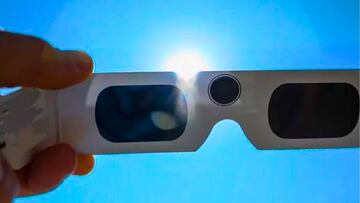2024 SOLAR ECLIPSE
Total solar eclipse: in what parts of Michigan will you be able to see it?
While Michigan falls outside the path of totality there are still some opportunities for residents to view a partial solar eclipse on Monday, 8 April.

The state of Michigan is just a few miles outside the path of totality for the solar eclipse on Monday, 8 April.
Follow solar eclipse in USA 2024 live online: reactions, best images and latest news.
What is totality during a solar eclipse?
According to NASA, "in the path of totality, where the Moon completely covers the Sun, the sky will become dark, as if it were dawn or dusk."
For those looking to experience totality, Michigan leaves few options, with one news site, Bridge Michigan, identifying Luna Pier in Monroe County as the only place where 100 percent darkness can be expected. However, because the state is so close to the path of totality, residents of Detroit and Ann Arbor are in areas where more than 98 percent of the sun will be covered.
What other viewing options do Michiganders have to view the eclipse?
If you simply cannot settle for viewing a partial eclipse, travel will be required, and those making any trips into the path of totality should expect traffic and congestion on Monday.
Ohio and Indiana, which border Michigan to the south, have areas within their borders that will experience totality, meaning experiencing the celestial event could be a short drive away for those living in the bottom half of the state. For example, Toledo could be a great place to view the eclipse, and for those living in Detriot or Ann Arbor, the Ohio city is only an hour away.
What time will the eclipse be visible in Michigan?
As this eclipse is moving from the south to the north, Michigan will be one of the last places to view the event. Scientists expect a partial eclipse to become visible somewhere around 2 p.m., but the exact time can be found for each city using a tool created by NASA.
For example, in the capital, Lansing, 3:12 p.m. will be peak coverage, with 96 percent of the sun expected to be covered by the moon. At the same time, in the north of the state, in Traverse City, 87 percent of the sun will be covered, meaning that residents will still be able to enjoy the eclipse without making any major journies south.






